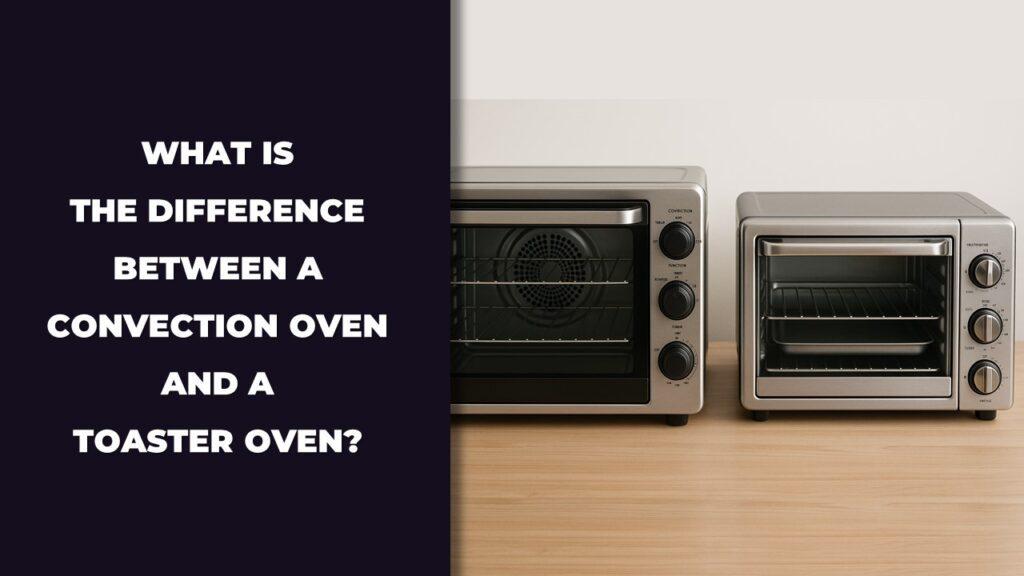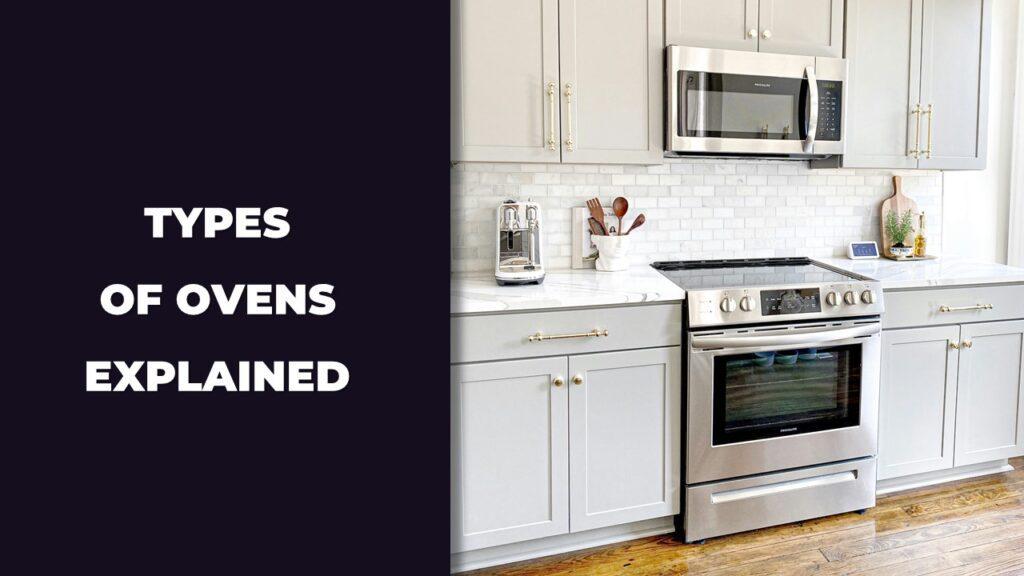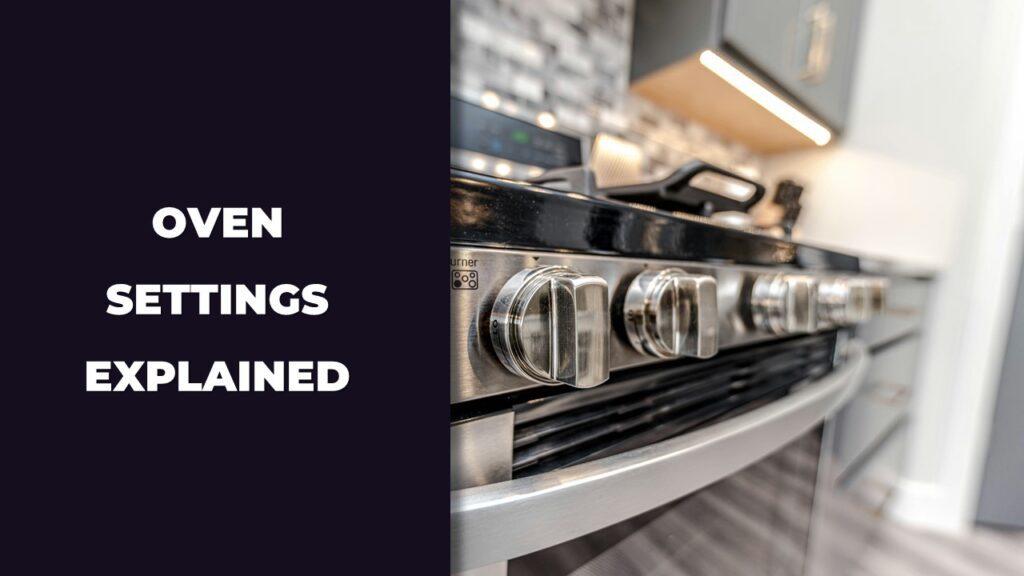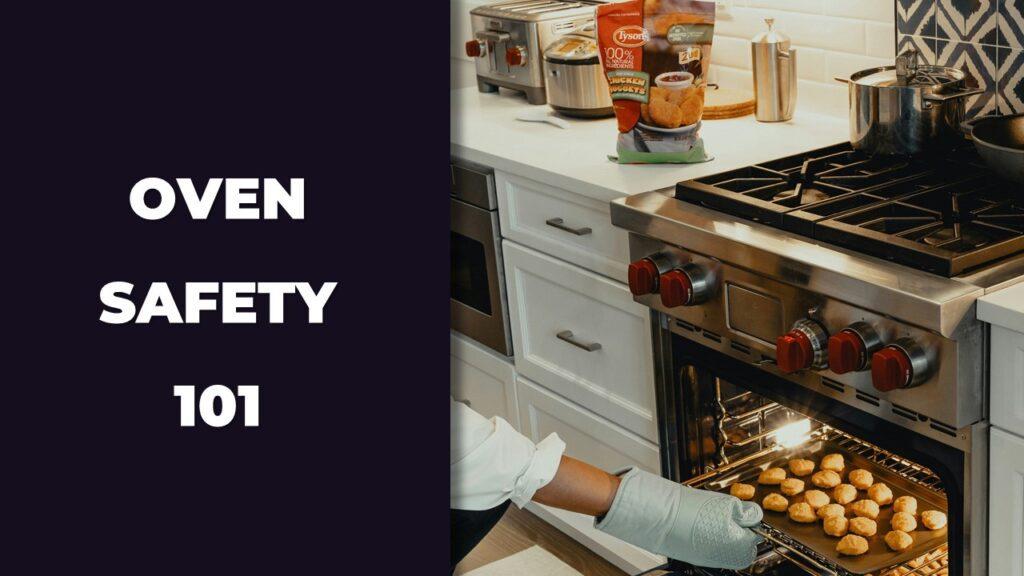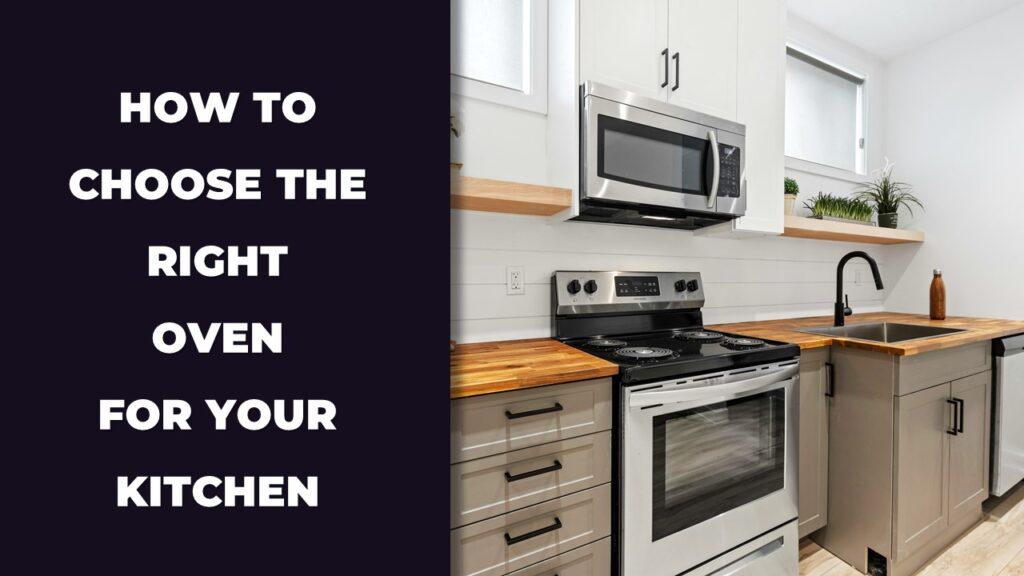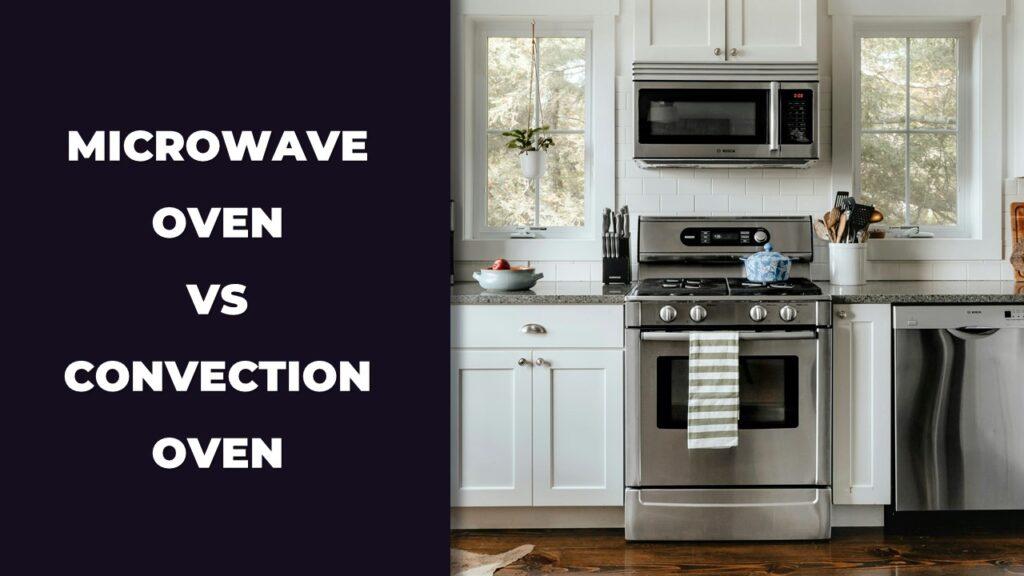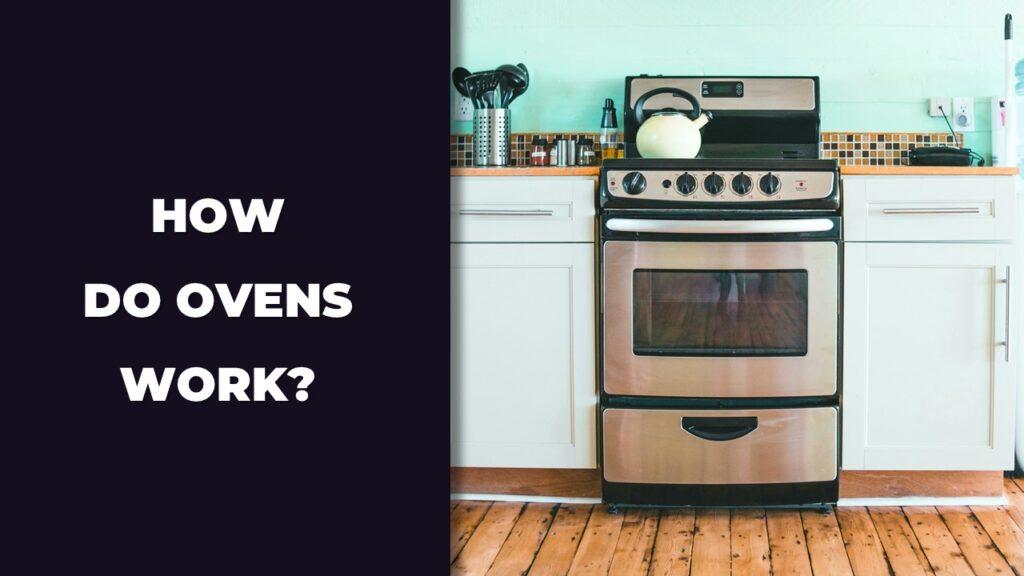
Ovens work by using electricity or gas to heat a closed space, then spreading that heat around to cook food. Heating elements or gas burners create the heat. A thermostat keeps the temperature steady. Some ovens also have a fan to push hot air around so food cooks more evenly and faster.
In this article, we are going to cover how ovens heat up, how air flow affects cooking, the different types of ovens, and what each cooking mode really does. It’s written in simple terms, so even if you’re just getting started in the kitchen, you’ll get it.
How Do Ovens Work To Cook Food?
An oven cooks food by generating heat using gas or electricity, then holding that heat inside a sealed chamber. The hot air surrounds your food and cooks it from the outside in. Some ovens rely on natural heat movement, while others, like convection ovens, use a fan to circulate heat more evenly across the oven cavity.
Electric ovens heat up using metal coils that glow when electricity passes through them. Gas ovens use a burner flame to warm the air. In both cases, once the oven reaches the set temperature, the heat begins to transfer to your cookware and then into the food itself. This process is a mix of conduction (heat moving through surfaces), convection (hot air movement), and radiant heat from the oven walls or elements.
A built-in oven thermostat monitors the temperature and turns the heat source on or off to maintain consistency. That’s why recipes bake more evenly at the correct temperature. If you’ve ever wondered why food browns better on one rack or cooks faster in a convection setting, it usually comes down to how your oven distributes heat and controls airflow during cooking.
Core Components Inside an Oven That Make It Work
The core components inside an oven include heating elements or gas burners, a thermostat with sensors, and an insulated oven cavity. These parts work together to generate heat, control temperature, and keep the heat inside so your food cooks evenly.
Let’s break each part down in simple terms.
Heating Elements (Electric and Gas Burners)
Electric ovens use metal coils at the top and bottom. When powered, these coils heat up and cook your food. The bottom one is usually for baking, the top for broiling.
Gas ovens use burners that ignite a flame to heat the oven. They heat up fast and are great for quick, responsive cooking.
Thermostats and Sensors
The thermostat keeps the oven at the temperature you set. When the heat drops, it turns back on. When it gets too hot, it shuts off.
Sensors, like thermistors, help the oven stay accurate. They prevent overcooking or undercooking by checking the temperature constantly.
Oven Cavity and Insulation
The oven cavity is the space where food cooks. It’s surrounded by insulation that traps the heat inside.
This helps food cook more evenly, saves energy, and keeps the kitchen from overheating. You don’t see it, but it’s working hard every time you use the oven.
How Air Flow Affects Cooking in Different Oven Types
Air flow plays a big role in how evenly your oven cooks food. Traditional ovens rely on natural heat movement, while convection ovens use a fan to move hot air around. Some advanced models also include a third heating element for even better results.
Let’s look at how each type handles air flow and what that means for your cooking.
Natural Convection in Traditional Ovens
Traditional ovens rely on natural air movement. Hot air rises, cool air sinks. This creates a gentle circulation, but it’s not perfect. That’s why the top rack can get too hot while the bottom stays cooler.
You might’ve noticed that cookies on the top rack brown faster, or that casseroles need rotating. That’s the result of uneven air flow. Natural convection works fine, but it needs a bit more attention from you.
Forced Convection (Fan-Based Ovens)
Convection ovens have a built-in fan, usually at the back. This fan blows the hot air around, so the temperature stays more consistent across all racks.
This means food cooks faster, browns better, and you don’t have to rotate trays as often. It’s great for baking multiple trays at once or roasting things like veggies and meats more evenly.
True Convection vs Regular Convection
Regular convection uses a fan to move the air, but true convection adds a third heating element behind the fan. This creates even more consistent heat because the air being circulated is actively heated.
With true convection, you get quicker cooking times, better crisping, and fewer surprises like raw spots or burnt edges. It’s especially useful for baking large batches or getting that perfect golden finish.
Different Oven Types and How They Work
Different oven types work in slightly different ways, depending on how they create and move heat. Electric ovens use heating coils, gas ovens burn fuel to produce heat, convection ovens add a fan to circulate air, and newer types like steam, air fryer, and microwave ovens offer unique cooking methods. Each one has its strengths depending on what and how you like to cook.
Here’s a simple breakdown of how each oven type works and what makes them different.
Electric Ovens
Electric ovens use metal heating elements, usually one at the bottom and one at the top. These elements heat up when electricity passes through them. The bottom element is used for baking, while the top is for broiling.
Electric ovens are known for their steady, dry heat. They’re great for baking cookies, casseroles, and roasting vegetables. Since most kitchens already have the needed wiring, they’re also easy to install and use.
Gas Ovens
Gas ovens heat up using burners powered by natural gas or propane. When you turn the oven on, the gas ignites to produce a steady flame that heats the air inside the cavity.
These ovens tend to heat up quickly and respond fast to temperature changes. Some cooks prefer them for baking bread or roasting meat, thanks to the slightly moister heat compared to electric ovens.
Convection Ovens
Convection ovens are either electric or gas ovens with a built-in fan that moves hot air around the food. This air flow helps food cook faster and more evenly, reducing the need to rotate trays or shift dishes around.
They’re ideal for batch baking, roasting, and dishes that benefit from even browning. If your oven has a convection setting, it’s worth using when you want crisp edges or faster cook times.
Steam Ovens
Steam ovens use water to create steam inside the cooking chamber. That steam surrounds the food and cooks it gently, which helps retain moisture and nutrients.
Steam ovens are great for vegetables, fish, grains, and even reheating leftovers without drying them out. Some ovens combine steam and convection to give you the best of both worlds.
Air Fryer Ovens
An air fryer oven uses high-speed hot air circulation to cook food with little to no oil. It’s like a convection oven, but the fan is usually stronger, and the cooking area is smaller and more focused.
They’re perfect for crisping up fries, chicken wings, or frozen snacks. Many modern ovens now come with an air fry setting built-in, making it more convenient for everyday use.
Microwave and Induction
Microwave ovens cook by sending out microwave radiation that excites water molecules in food, heating it quickly from the inside out. They’re great for reheating, defrosting, or cooking small portions fast.
Induction ovens aren’t really ovens; they’re cooktops. They heat pots and pans directly using electromagnetic energy. While the oven part below the cooktop still works like a standard electric oven, the induction top provides precise and fast stovetop heating.
Oven Cooking Modes and What They Do
Oven cooking modes control how heat is delivered. Some use bottom heat, others use intense top heat, and newer modes like air fry and steam give more options for texture and speed. Knowing what each mode does can help you get better results without guessing.
Bake
Bake mode uses the bottom heating element to create a steady, even temperature throughout the oven. It’s the go-to setting for cakes, cookies, casseroles, and breads.
This mode surrounds your food with gentle heat, allowing it to rise, cook through, and develop structure. It’s great for dishes that need time and consistency without harsh top heat.
Broil
Broil mode uses only the top heating element to deliver intense, direct heat. It’s ideal for searing meats, caramelizing cheese, or giving vegetables a crisp finish.
Think of it like an upside-down grill. Place food close to the top, and it will brown quickly. Just keep an eye on it—broiling happens fast and can burn if left unattended.
Roast
Roasting uses dry, high heat from the bottom or both top and bottom elements. It’s perfect for browning the outside of meats and veggies while cooking the inside through.
It works well for whole chickens, root vegetables, and anything you want to crisp on the outside but keep juicy inside. Roasting is basically baking at higher heat for heartier foods.
Grill (Oven Mode)
Some ovens come with a grill mode, which mimics the effect of outdoor grilling by using high radiant heat from the top.
You can use a grill pan or broiler tray to get nice charred lines on meats or veggies. It won’t have the smoky flavor of a barbecue, but it gives you similar texture and browning.
Air Fry, Steam, Self-Clean
These modern oven features make cooking easier and cleanup less of a hassle.
- Air Fry: Uses fast-moving hot air to crisp up food with little or no oil. Great for fries, wings, or frozen snacks.
- Steam: Adds moisture to the cooking process. Keeps fish, veggies, and grains tender and juicy.
- Self-Clean: Heats the oven to a very high temp to burn off food residue, turning it to ash for easy wipe-down.
How Heat Is Transferred to Food in the Oven
Heat is transferred to food in the oven through three main methods: conduction, convection, and radiation. These work together to cook your food from the outside in, depending on oven type, cookware, and cooking mode.
Each method plays a part, even if you don’t always notice it.
- Conduction: This happens when heat moves from one solid object to another. For example, the metal baking tray gets hot, then transfers that heat to the bottom of your food. It’s why using the right pan matters.
- Convection: This is the movement of hot air inside the oven. In traditional ovens, the air rises and falls naturally. In convection ovens, a fan helps circulate the heat more evenly. This cooks food faster and reduces hot or cold spots.
- Radiation: This is direct heat coming off the heating elements or the oven walls. It warms the surface of your food quickly. Broiling uses radiation almost entirely, like grilling from above.
Common Oven Myths and Cooking Mistakes
A lot of people think ovens are foolproof. Set the temp, pop in the tray, and wait. But small habits can quietly ruin your results. Take preheating, for example. Is preheating the oven necessary? Absolutely, especially if you’re baking. Starting with a cold oven is one of the most common oven temperature problems. It often leads to uneven baking, flat cookies, or soggy centers.
Another mistake is turning the heat way up to cook food faster. That usually just burns the outside while the inside stays raw. It’s better to trust the recipe. Then there’s rack placement. People don’t always realize how to use oven racks correctly. The top rack can overbrown your food, and the bottom might undercook it. Unless your recipe says otherwise, stick to the middle rack for the most even heat.
And not all ovens cook evenly. Some run hotter than the dial shows, others have hot or cold spots. That’s why your oven cooks unevenly even when you follow every step. Using an oven thermometer can fix this quietly but effectively. It’s cheap, easy, and saves you from wondering why your lasagna burns on one side but stays raw on the other.
How to Optimize Oven Use for Better Results
To get better cooking results from your oven, focus on small adjustments that improve heat flow, timing, and placement. These don’t take much effort but can seriously improve your meals.
Try these tips for more consistent and delicious outcomes:
- Use the Middle Rack for Even Cooking: It’s the most balanced spot for airflow and heat. Unless the recipe says otherwise, it’s your safest bet.
- Don’t Overcrowd the Oven: Air needs room to move around. If trays are crammed in, heat can’t circulate properly, and food may cook unevenly.
- Know When to Use Convection: Convection is great for roasting, air frying, or baking multiple trays. It’s not ideal for delicate cakes or custards, which may cook too quickly on the outside.
- Check With a Thermometer: Oven dials aren’t always accurate. A small oven thermometer can tell you the real temperature and help avoid surprises.
- Let the Oven Preheat Fully: Wait until the preheat light or beep signals it’s ready. Putting food in too early can throw off timing and texture.
- Clean Spills Promptly: Burnt bits can smoke, affect flavor, and even damage heating elements. Wipe up messes once the oven cools.
Conclusion
Once you get how your oven actually works, things start to click. You stop guessing why your cookies burn on the bottom or why your chicken takes forever to cook. It’s not just about turning a knob, heat, airflow, and even rack position all play a part. And when you get that, your food turns out better. More often. With less stress.
Every oven’s a little different. Some are gas, some are electric, some blow hot air around like a wind tunnel, and others add steam to keep things juicy. The trick is knowing what yours does best. Sometimes it’s just small stuff, like moving your tray up one rack or switching to convection, that makes all the difference.
You don’t need fancy skills or gear. Just a little know-how and attention go a long way. The more you pay attention to how heat moves inside your oven, the more confident you’ll feel—and the better your food will turn out. Simple as that.
Related FAQs
Why does my oven cook unevenly?
Uneven cooking is usually caused by poor air circulation or hot spots inside the oven. It can also happen if you place dishes too close to the heating element or overcrowd the oven. Convection ovens with a fan help solve this by moving air more evenly.
What’s the difference between bake and roast?
Both use dry heat, but baking is done at lower, steady temperatures and is ideal for things like cakes and casseroles. Roasting uses higher heat to brown and crisp the outside of meats and vegetables while keeping the inside tender.
Can I use metal or glass in a convection oven?
Yes, both are safe. Metal pans are better for browning and crisping, while glass dishes heat more slowly and evenly. Just avoid lightweight foil pans—they can shift with the airflow and cook unevenly.
Do gas ovens need electricity?
Most modern gas ovens do need electricity for the thermostat, control panel, and igniter. If there’s a power outage, the oven may not turn on even if there’s gas available.
Are convection ovens better than traditional ones?
Convection ovens cook faster and more evenly thanks to the fan that circulates hot air. They’re especially helpful for roasting and baking multiple trays. Traditional ovens are still great, but may need more attention for even results.

At our core, we’re a group of passionate households and gardening tools and appliances users and enthusiasts. We dive deep into the world of tech, especially when it’s about your household or gardening electric items. We try to provide as much value to the readers with our information and how to blog articles as possible. For affiliate articles our honest and transparent reviews of essential tech products are rooted in real-world experience. We take great satisfaction in offering unbiased evaluations, ensuring that you can make informed decisions when investing in your desired techs.

